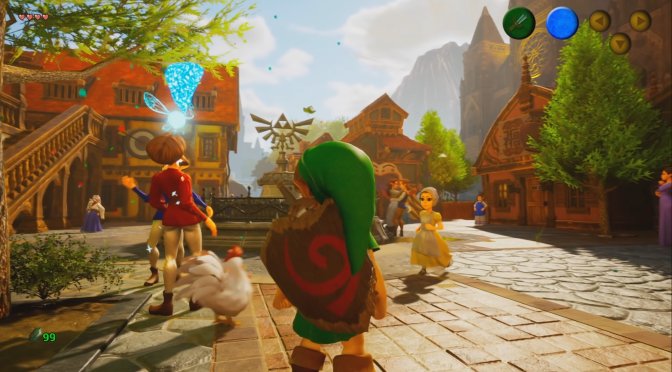CryZENx has released a new video (and a new build) from his fan remake of The Legend of Zelda: Ocarina of Time in Unreal Engine 5. This video shows off the Hyrule Field, as well as some of the tweaks and improvements that the artist has implemented in it.
Going into more details, CryZENx has been working the whole month to further optimize the project. CryZENx has added new variables and fixed numerous stuff, as well as added the whole inventory and made it functional. Furthermore, he implemented some new water physics for the game when you slash with the sword.
Now the good news is that the artist has released a brand new version for his Patreon followers. Yeah yeah, this sucks for everyone else. However, you can head over to CryZENx’s Discord server and download its free Unreal Engine 4 version. Additionally, the artist plans to release a more polished version of this UE5 project to the public in the future.
Speaking of Unreal Engine 5, we also suggest taking a look at the following videos. Right now, you can download a Superman UE5 Demo, a Halo 3: ODST Remake, and a Spider-Man UE 5 Demo. Moreover, these videos show Resident Evil, Star Wars KOTOR and Counter-Strike Global Offensive in UE5. Additionally, you can find a Portal Remake and an NFS3 Remake. And finally, here is a Half Life 2 Fan Remake, an Oblivion fan remake, a World of Warcraft remake, a Skyrim remake, a Grand Theft Auto San Andreas Remake, a Doom 3 Remake, and a Zelda Ocarina of Time UE5 Remake, a God of War Remake and a GTA IV Remake
Enjoy!

John is the founder and Editor in Chief at DSOGaming. He is a PC gaming fan and highly supports the modding and indie communities. Before creating DSOGaming, John worked on numerous gaming websites. While he is a die-hard PC gamer, his gaming roots can be found on consoles. John loved – and still does – the 16-bit consoles, and considers SNES to be one of the best consoles. Still, the PC platform won him over consoles. That was mainly due to 3DFX and its iconic dedicated 3D accelerator graphics card, Voodoo 2. John has also written a higher degree thesis on the “The Evolution of PC graphics cards.”
Contact: Email

